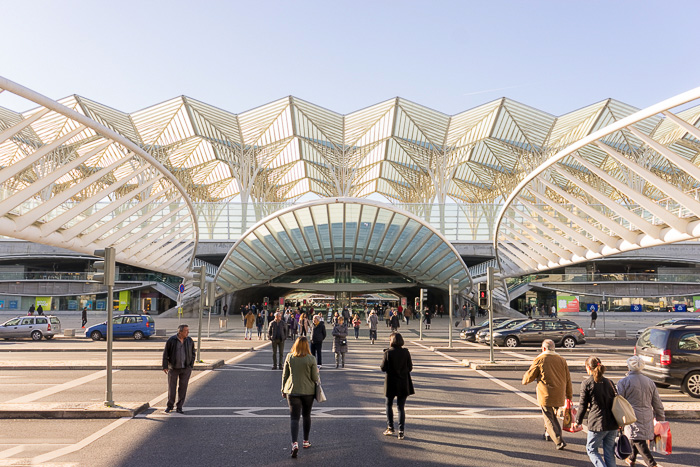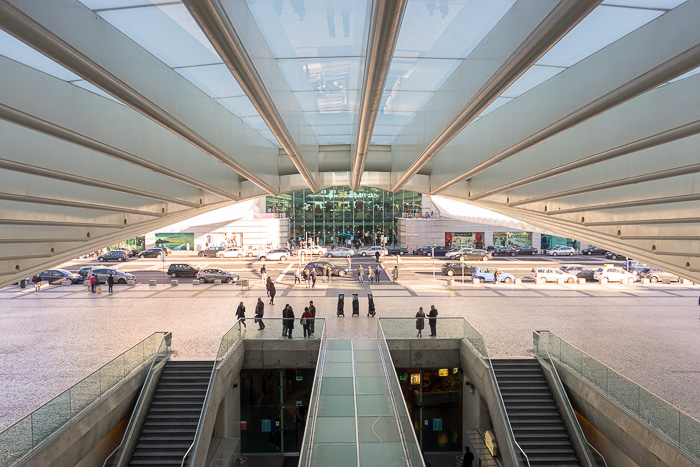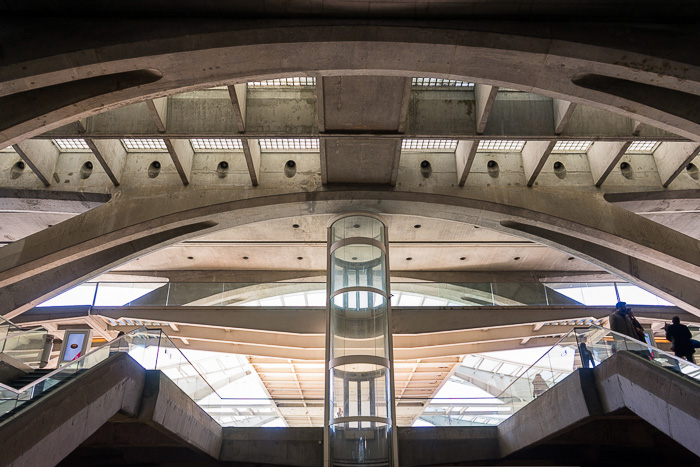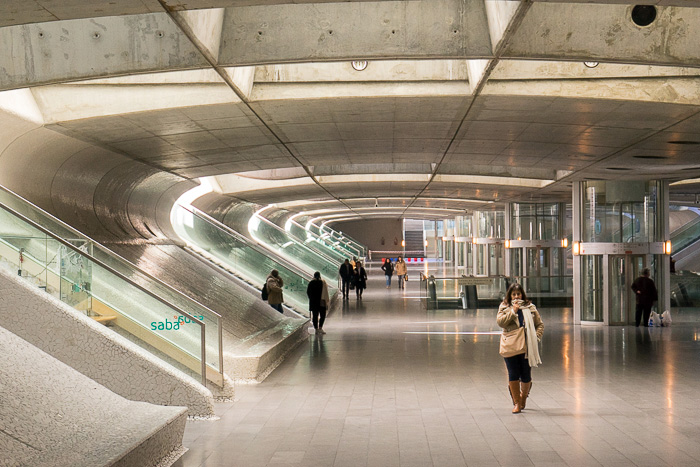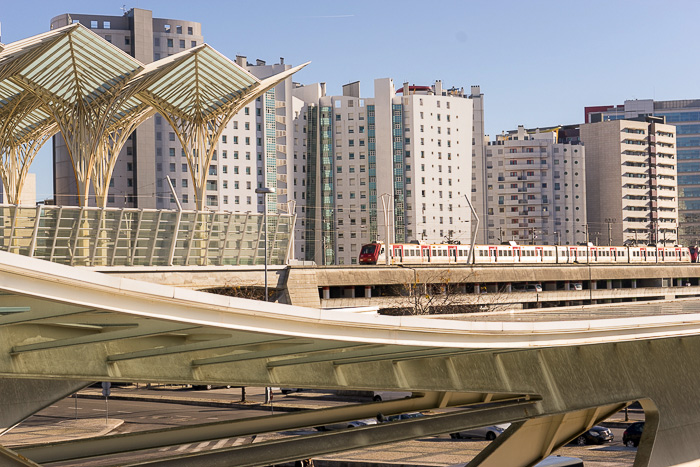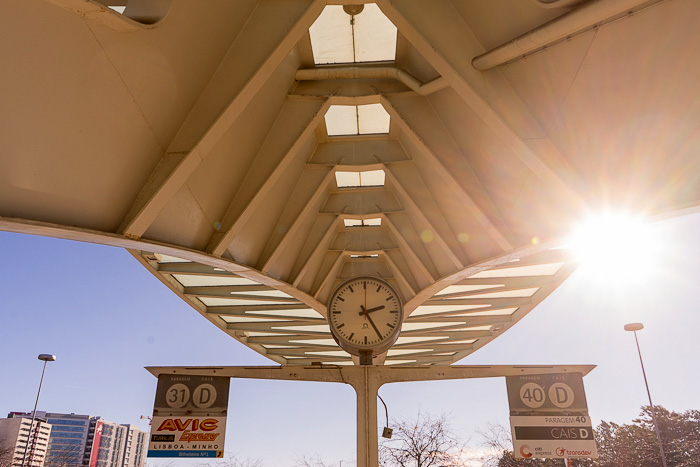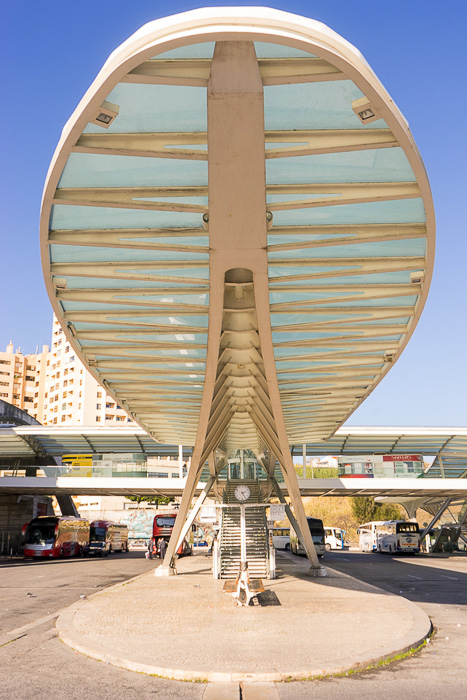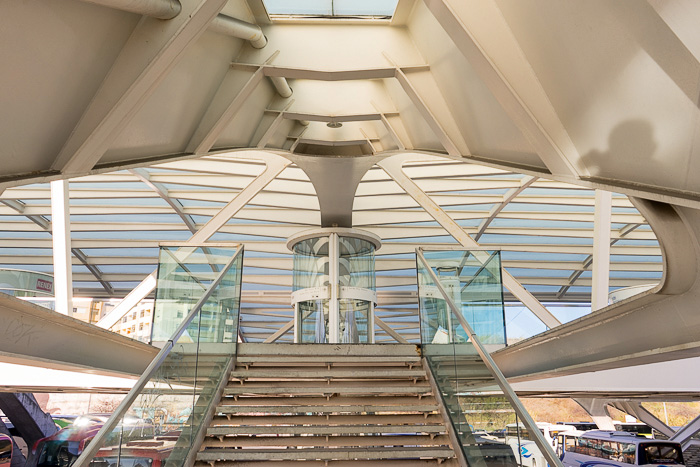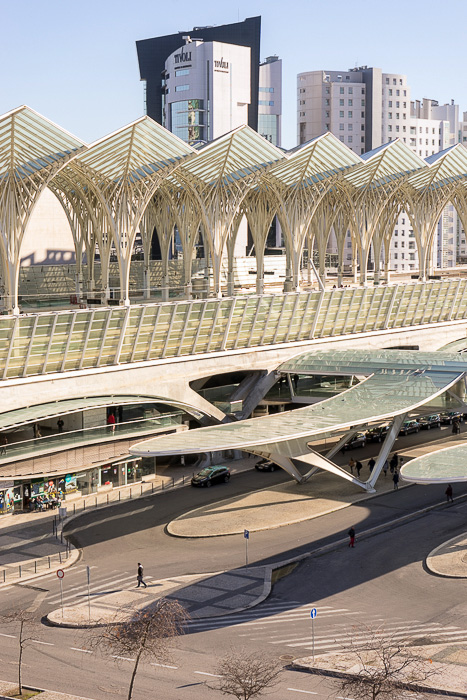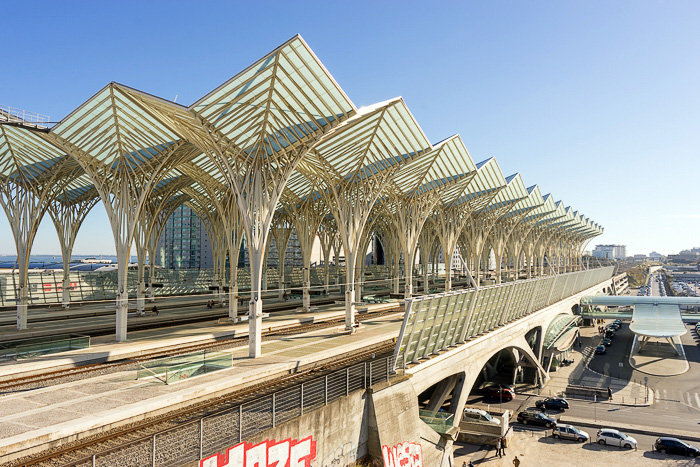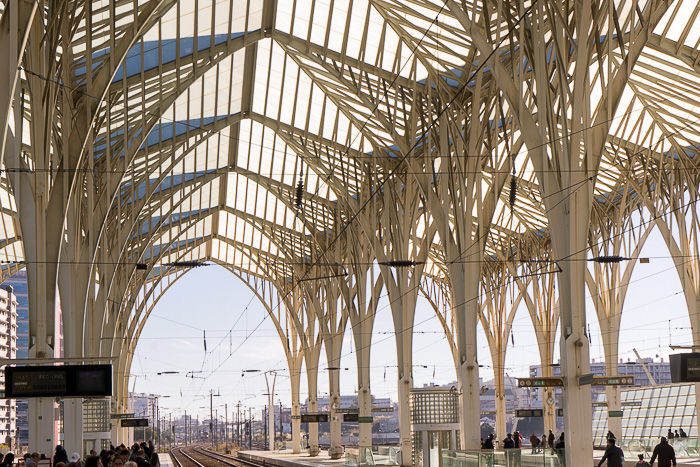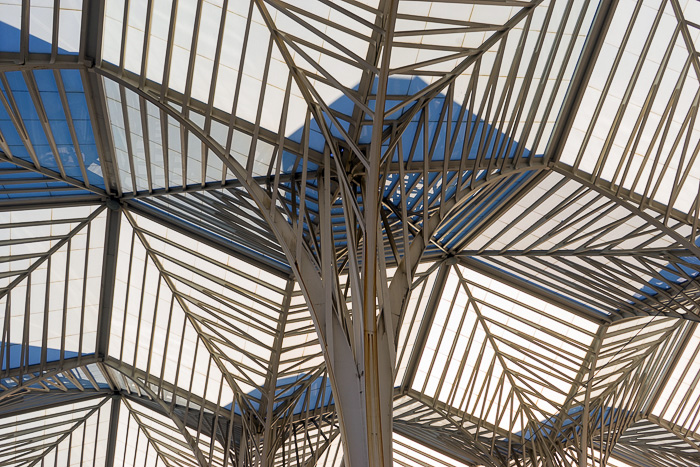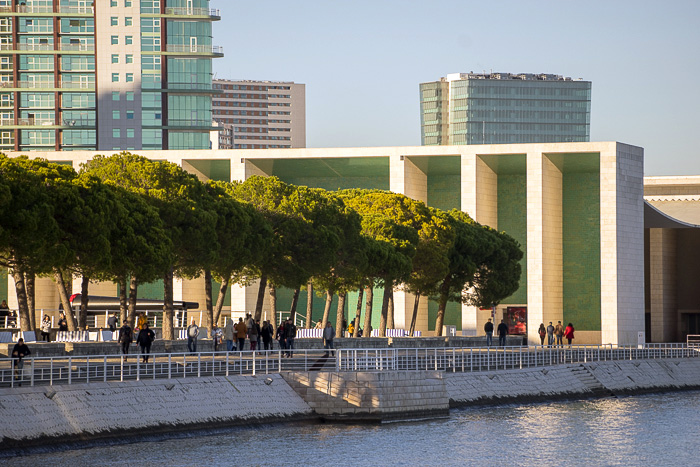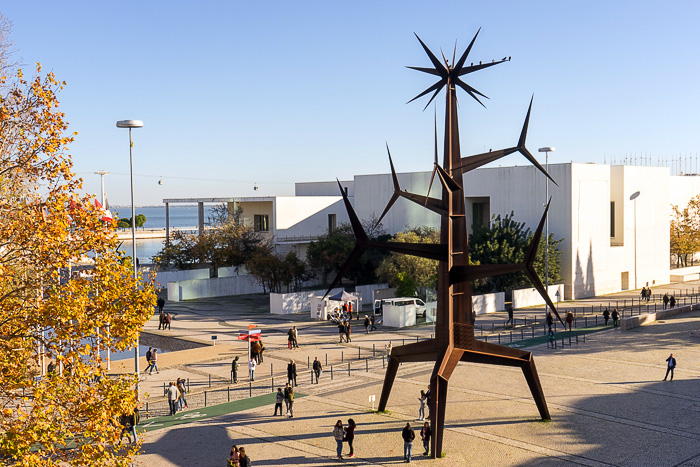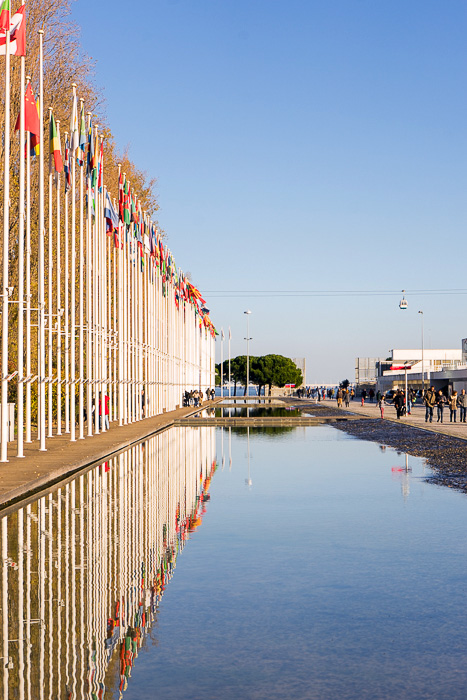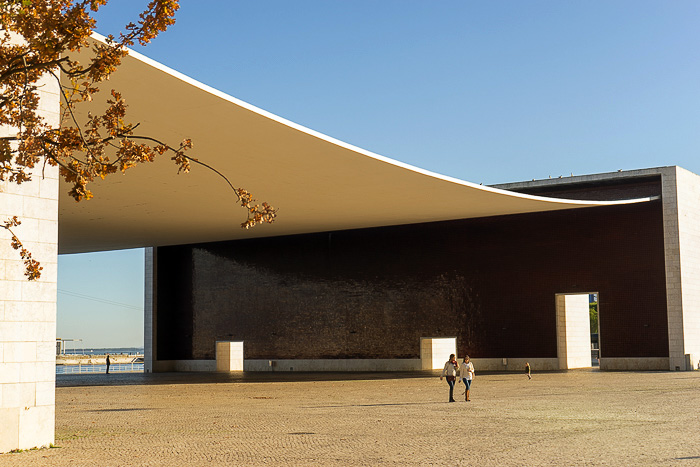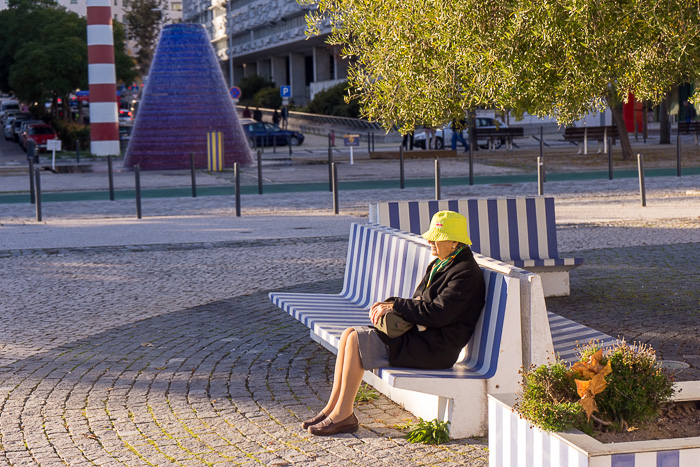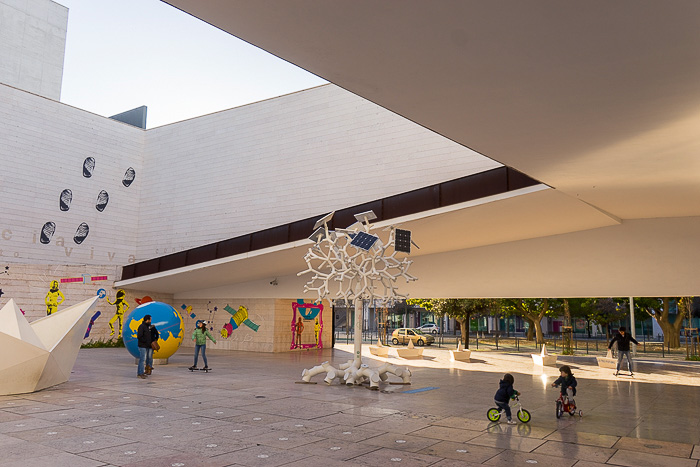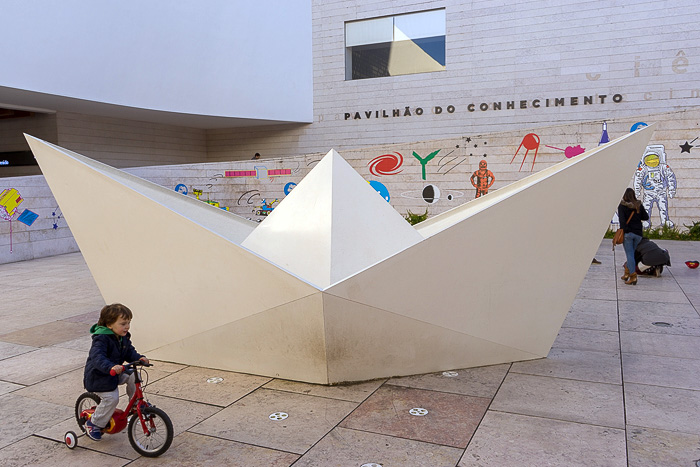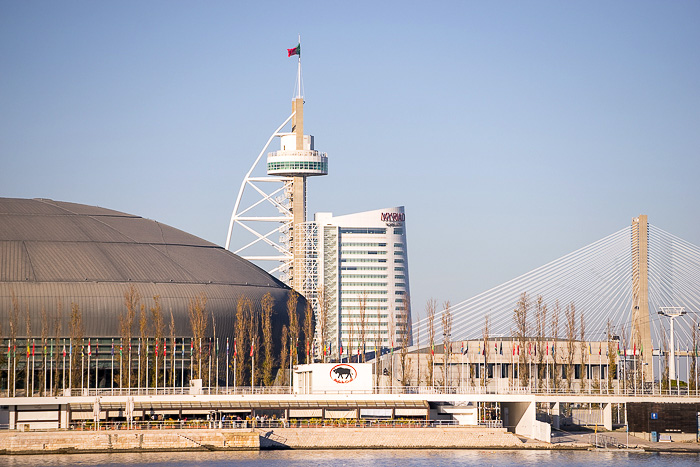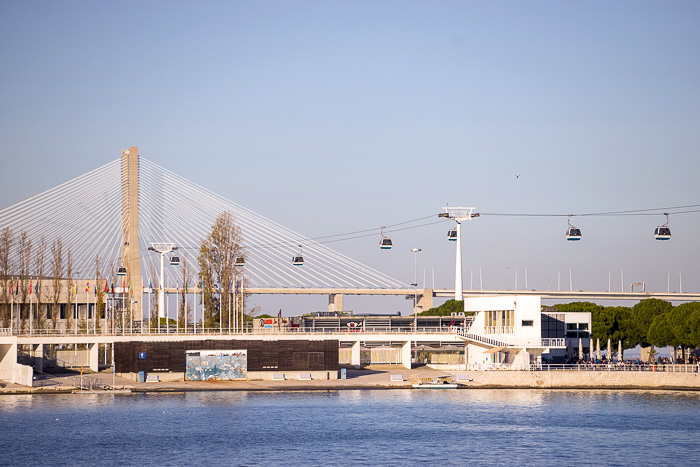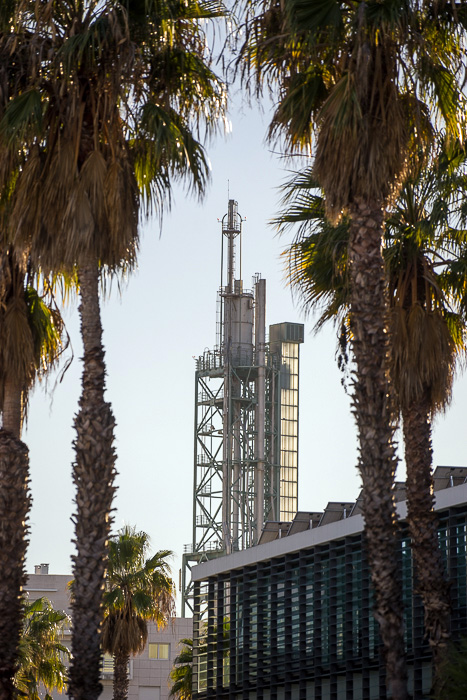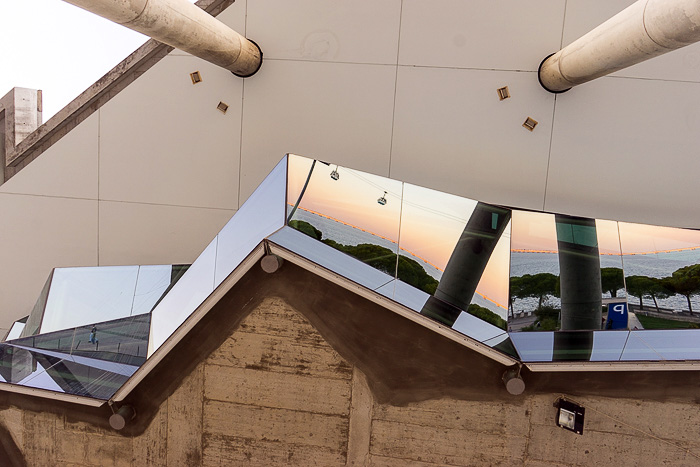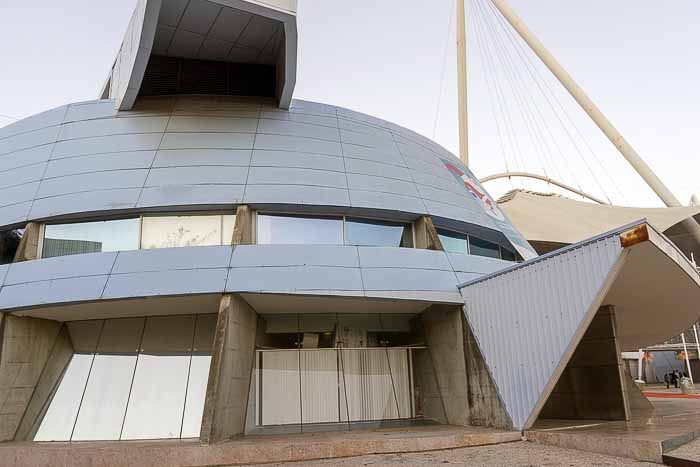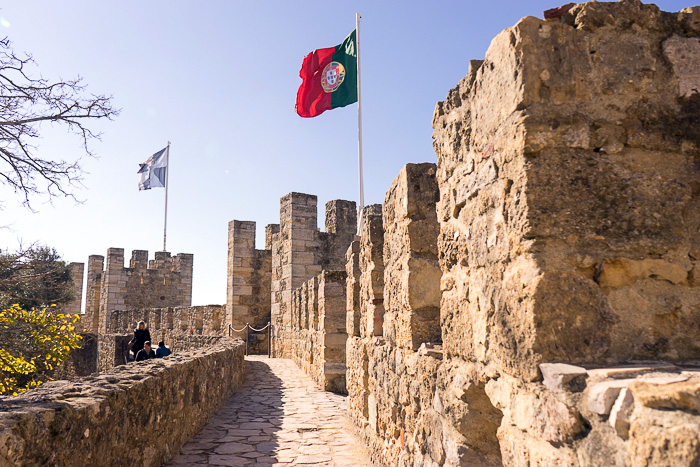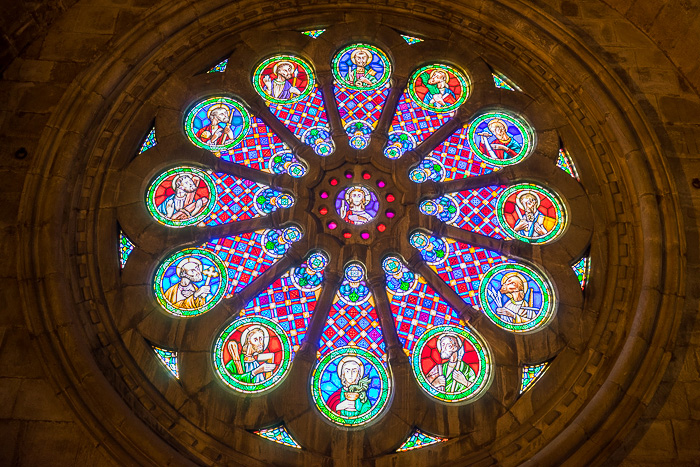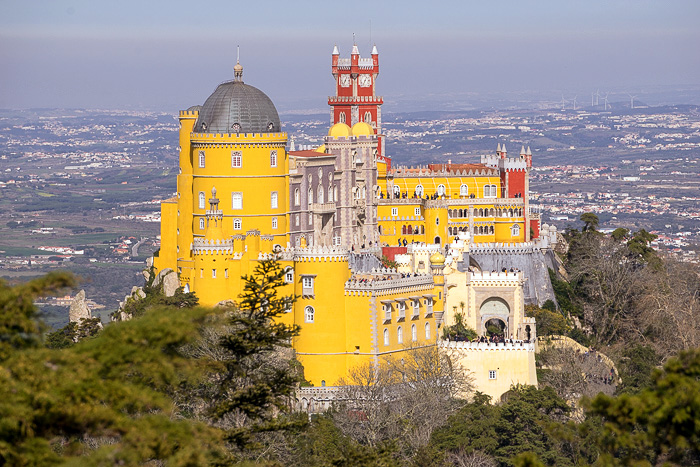The Parque das Nações
If you’ve spent enough time among the cobblestone streets and 19th-century architecture of Baixa and central Lisbon, the Parque des Nacões might come as a shock. This area which stretches along the Tagus estuary northeast of the city center, was totally redeveloped for Lisbon’s 1998 World Expo, and is defined by its modern pavilions, parks and attractions.
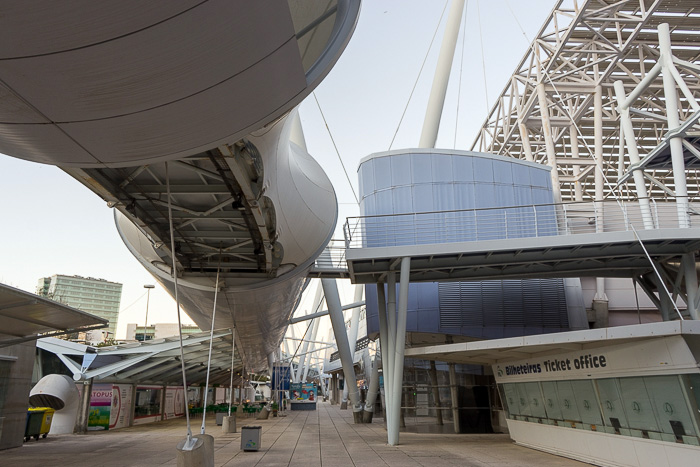
After disembarking the metro at the Gare do Oriente, we needed two seconds to identify the train station as the work of Santiago Calatrava. One of the world’s foremost architects, Calatrava has designed audacious structures from Malmö to New York City. He hails from our adopted hometown of Valencia, Spain, a city which he used as a sandbox for his wildest visions, so we’ve become extremely familiar with the complex geometry, the criss-crossing white lines, the overhanging arches, and the alien aesthetic of his work… as well as those quintessential Calatrava touches like bridges you can’t actually use.
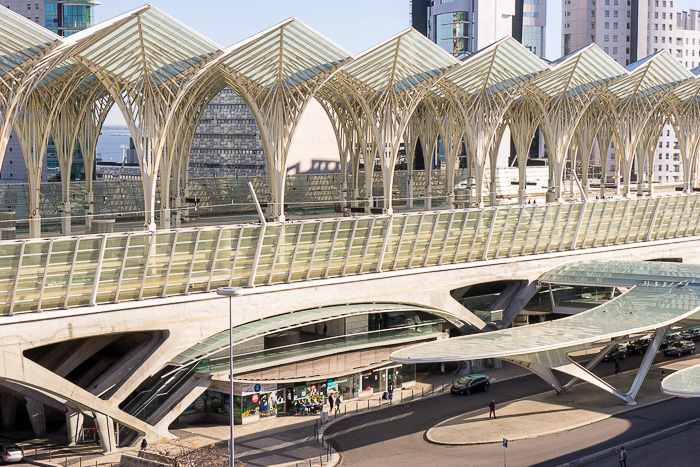
The Estação do Oriente serves an appropriate entrance for the Parque des Nacões, where the architecture is unapologetically forward-looking. The 1998 World Expo was a major deal for Lisbon; with the theme of “Oceans, A Heritage for the Future”, the city welcomed 143 participating countries, built a new metro line, and constructed the breathtaking Vasco da Gama Bridge — still the longest in Europe.
But arguably the most important thing Lisbon did, was have a plan for the area once the Expo had ended. They sold off the various pavilions to private concerns, and invested in the zone, rechristening it the “Park of Nations”. If our experience on a sunny Sunday afternoon in December was any indication, these efforts have paid off. This area seems to be thriving; all of the buildings are in use, and there was an impressive number of people enjoying the park.
The Parque des Nacões is certainly not lacking for entertainment. Appearing to float in a lagoon is the Oceanarium, Europe’s largest indoor aquarium. There’s the Casino Lisboa in the former Pavilion of the Future. The former Atlantic Pavilion is now the Meo Arena: a multifunctional space for concerts and sporting events which is one of the largest indoor arenas in Europe. And there’s the stunning Feira Internacional de Lisboa, which hosts Portugal’s biggest conventions.
We didn’t visit a single one of these attractions, and still had a wonderful day, because the area is so interesting. There are volcano-shaped fountains which occasionally erupt, undulating grassy parks meant to resemble waves, loads of modern sculptures, and the flags of all the nations that participated in the Expo. Best of all was the happy buzz of a city enjoying itself on its day off. With all the families walking dogs, kids rolling down the hills, and couples smooching on the benches, not forgetting the sun and beautiful views over the Tagus, it was simply an enjoyable place to be.
Location of the Gare do Oriente and Parque das Nacões
